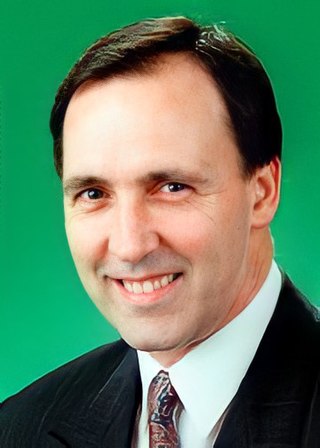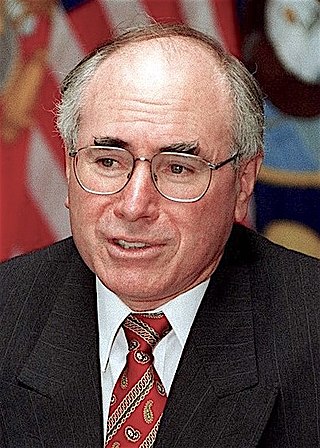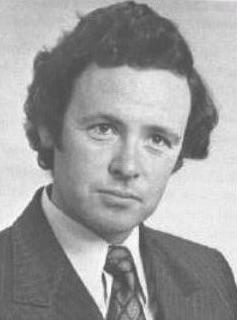Related Research Articles

Robert James Lee Hawke was an Australian politician and trade unionist who served as the 23rd prime minister of Australia from 1983 to 1991. He held office as the leader of the Australian Labor Party (ALP), having previously served as the president of the Australian Council of Trade Unions from 1969 to 1980 and president of the Labor Party national executive from 1973 to 1978.

Paul John Keating is an Australian former politician who served as the 24th prime minister of Australia from 1991 to 1996, holding office as the leader of the Australian Labor Party (ALP). He previously served as the treasurer of Australia under Prime Minister Bob Hawke from 1983 to 1991 and as the seventh deputy prime minister of Australia from 1990 to 1991.

The Australian Senate is the upper house of the bicameral Parliament of Australia, the lower house being the House of Representatives.

The Parliament of Australia is the legislative body of the federal level of government of Australia. It consists of three elements: the monarch, the Senate and the House of Representatives. It combines elements from the UK Parliament and the US Congress.

The 1996 Australian federal election was held to determine the members of the 38th Parliament of Australia. It was held on 2 March 1996. All 148 seats of the House of Representatives and 40 seats of the 76-seat Senate were up for election. The centre-right Liberal/National Coalition led by Opposition Leader John Howard of the Liberal Party and coalition partner Tim Fischer of the National Party defeated the incumbent centre-left Australian Labor Party government led by Prime Minister Paul Keating in a landslide victory. The Coalition won 94 seats in the House of Representatives, which is the largest number of seats held by a federal government to date, and only the second time a party had won over 90 seats at a federal election.

The Nuclear Disarmament Party (NDP) was an Australian political party formed in June 1984. It was founded by medical researcher Michael Denborough as the political arm of the Australian anti-nuclear movement, which had been active since the early 1970s.

Raymond Steele Hall is a former Australian politician who served as the 36th Premier of South Australia from 1968 to 1970. He also served in the federal Parliament as a senator for South Australia from 1974 to 1977 and federal member for the Division of Boothby from 1981 to 1996.
A double dissolution is a procedure permitted under the Australian Constitution to resolve deadlocks in the bicameral Parliament of Australia between the House of Representatives and the Senate. A double dissolution is the only circumstance in which the entire Senate can be dissolved.

Ralph Willis AO is an Australian former politician who served as a Cabinet Minister during the entirety of the Hawke-Keating government from 1983 to 1996, most notably as Treasurer of Australia from 1993 to 1996 and briefly in 1991. He also served as Minister for Industrial Relations, Minister for Transport and Communications and Minister for Finance. He represented the Victorian seat of Gellibrand in the House of Representatives from 1972 to 1998.

Susan Maree Ryan was an Australian politician and public servant. She was a member of the Australian Labor Party (ALP) and held ministerial office in the Hawke government as Minister Assisting the Prime Minister for the Status of Women (1983–1988), Minister for Education and Youth Affairs (1983–1984), Minister for Education (1984–1987) and Special Minister of State (1987–1988). She was the first woman from the ALP to serve in cabinet and was notably involved in the creation of the Sex Discrimination Act 1984 and the Affirmative Action Act 1986. Ryan served as a senator for the Australian Capital Territory from 1975 to 1987. After leaving politics she served as the Age Discrimination Commissioner from 2011 to 2016, within the Australian Human Rights Commission.
The following lists events that happened during 1987 in Australia.
The Australia Card was a proposal for a national identification card for Australian citizens and resident foreigners. The proposal was made in 1985, and abandoned in 1987.

The 1987 Australian federal election was held in Australia on 11 July 1987, following the granting of a double dissolution on 5 June by the Governor-General Sir Ninian Stephen. Consequently, all 148 seats in the House of Representatives as well as all 76 seats in the Senate were up for election. The incumbent Australian Labor Party, led by Prime Minister Bob Hawke, defeated the opposition Liberal Party of Australia, led by John Howard and the National Party of Australia led by Ian Sinclair. This was the first, and to date only, time the Labor Party won a third consecutive election.
The Australian Privacy Foundation is an NGO formed for the purpose of protecting the privacy rights of Australians. Its aim is to focus public attention on emerging issues which pose a threat to the freedom and privacy of Australians, and also takes a leading role on issues of defending rights of individuals to control access to personal information and to be free of excessive intrusions.

The 1983 Australian federal election was held in Australia on 5 March 1983. All 125 seats in the House of Representatives and all 64 seats in the Senate were up for election, following a double dissolution. The incumbent Coalition government which had been in power since 1975, led by Malcolm Fraser and Doug Anthony, was defeated in a landslide by the opposition Labor Party led by Bob Hawke.
David William Simmons, OAM, an Australian former politician, was a member of the Australian House of Representatives from 1983 to 1996, representing the seat of Calare for the Australian Labor Party. Simmons held several junior Ministerial positions in the Hawke and Keating Governments.
Noel Jeffrey Hicks is a former Australian politician. He was a member of the House of Representatives from 1980 to 1998, representing the New South Wales seats of Riverina and Riverina-Darling for the National Party. He also served as mayor of Broken Hill, New South Wales, in the 1970s.
John Saunderson is a former Australian politician and trade unionist. He was an Australian Labor Party member of the Australian House of Representatives from 1983 to 1990, representing the electorates of Deakin (1983–84) and Aston (1984-90).
The history of the Australian Labor Party has its origins in the Labour parties founded in the 1890s in the Australian colonies prior to federation. Labor tradition ascribes the founding of Queensland Labour to a meeting of striking pastoral workers under a ghost gum tree in Barcaldine, Queensland in 1891. The Balmain, New South Wales branch of the party claims to be the oldest in Australia. Labour as a parliamentary party dates from 1891 in New South Wales and South Australia, 1893 in Queensland, and later in the other colonies.

The 47th Parliament of Australia is the current meeting of the legislative body of the Commonwealth of Australia, composed of the Australian Senate and the Australian House of Representatives. The May 2022 federal election gave the Australian Labor Party control of the House. Labor won 77 seats at the election, and it gained an additional seat in April 2023 due to winning the Aston by-election, giving it a three-seat majority government. Labor leader Anthony Albanese became the 31st Prime Minister of Australia, and was sworn in by the Governor-General David Hurley on 23 May 2022. The 47th Parliament opened in Canberra on 26 July 2022.
References
- 1 2 3 Waterford, Jack (12 September 1991). "Obituary: Ewart Smith: 'National hero' of the blocked Australia Card". The Canberra Times. Archived from the original on 30 December 2013.
- ↑ Kirby, Michael (2011). "The Federal Attorney-General's Department: Past, Present and Future" (PDF). Retrieved 1 June 2013.
- 1 2 3 Brian Martin, Challenging Bureaucratic Elites; Retrieved 1 June 2013
- ↑ ABC, The World Today; Retrieved 1 June 2013
- ↑ "Just Another Piece of Plastic for your Wallet: The 'Australia Card' Scheme". RogerClarke.com. Retrieved 1 June 2013.
- 1 2 Kirby, Michael (1988), Ewart Smith's book on the Australia card: Foreword (PDF), p. 5, retrieved 31 December 2013
- ↑ "First Dog's Canberra Expose: Leigh Sales vs The Magpies". Crikey. 30 November 2012. Retrieved 1 June 2013.
- ↑ Lessons from the Australia Card – deux [sic] ex machina? Archived 21 January 2008 at the Wayback Machine ; Retrieved 1 June 2013
- ↑ Smith, Ewart (1989). The Australia card : the story of its defeat . South Melbourne : Sun Books. ISBN 9780725105693.
- ↑ "Order of the British Empire - Officer entry for Mr Eward Smith". Australian Honours Database. Canberra, Australia: Department of the Prime Minister and Cabinet. 12 June 1976. Retrieved 15 November 2019.
- ↑ Australian Privacy Foundation: Australian Big Brother Awards; Retrieved 1 June 2013